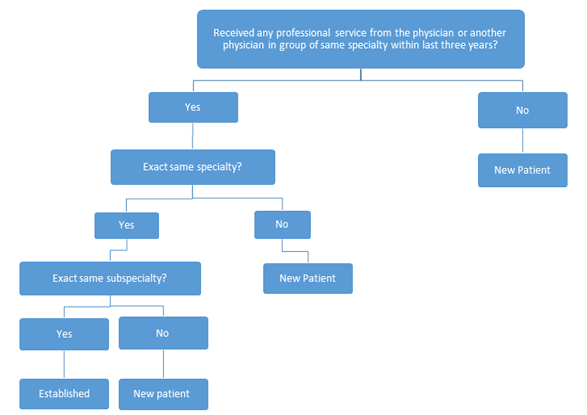Definition and Details of History
Level of History
There are four levels of History found in E/M,
- Problem Focused History
- Expanded Problem Focused History
- Detailed History
- Comprehensive History
The problem focused history requires documentation of the chief complaint (CC) and a brief history
of present illness (HPI),
The Expanded Problem Focused History requires documentation of the chief complaint (CC) and a brief history of present illness (HPI) and Problem Pertinent review of system
The Detailed history requires the documentation of a CC, an extended HPI, plus an
extended review of systems (ROS), and pertinent past, family, and/or social history (PFSH).
The Comprehensive history requires the documentation of a CC, an extended HPI, plus an Complete review of systems (ROS), and Complete past, family, and/or social history (PFSH).
Chief Complaint (CC)
A Chief Complaint or reason visit/ reason for appointment is a concise statement that describes the symptom, problem, condition, diagnosis, or reason for the
patient encounter.
The CC is usually stated in the patient’s own words. For example, patient complains of chest pain and radiating to shoulder, and denied shortness of breath. The medical record should clearly reflect the CC.
History of Present Illness (HPI)
The HPI is a chronological description of the development
of the patient’s present illness from the first sign and/
or symptom or from the previous encounter to the
present
The HPI elements are,
- Location (example: left leg)
- Quality (example: aching, burning, radiating pain)
- Severity (example: 10 on a scale of 1 to 10)
- Duration (example: started 3 days ago)
- Timing (example: constant or comes and goes)
- Context (example: lifted large object at work)
- Modifying factors (example: better when heat is applied)
- Associated signs and symptoms (example: numbness in toes)
There are two types of HPI,
A Brief HPI includes documentation of one to three HPI elements.
An Extended HPI, 1995 documentation guidelines – Should describe four or more elements of the present HPI or
associated comorbidities. In 1997 documentation guidelines – Should describe at least four elements of the present HPI or the
status of at least three chronic or inactive conditions
Review of Systems (ROS)
ROS is an inventory of body systems obtained by asking a series of questions to identify signs and/or symptoms the patient may be experiencing or has experienced.
These systems are recognized for ROS purposes,
- Constitutional Symptoms (for example, fever, weight loss)
- Eyes
- Ears, nose, mouth, throat
- Cardiovascular
- Respiratory
- Gastrointestinal
- Genitourinary
- Musculoskeletal
- Integumentary (skin and/or breast)
- Neurological
- Psychiatric
- Endocrine
- Hematologic/lymphatic
- Allergic/immunologic
The three types of ROS are problem pertinent, extended, and complete.
A Problem Pertinent ROS inquires about the system directly related to the problem identified in the HPI
An Extended ROS inquires about the system directly related to the problem(s) identified in the HPI and a
limited number (two to nine) of additional systems.
A Complete ROS inquires about the system(s) directly related to the problem(s) identified in the HPI
plus all additional (minimum of ten) organ systems.
- The Provider must individually document those systems
with positive or pertinent negative responses.
- For the remaining systems, a notation indicating all other
systems are negative is permissible. In the absence of such a notation, you must individually document at
least ten systems.
Past, Family, and/or Social History (PFSH)
PFSH consists of a review of three areas,
1. Past history includes experiences with illnesses, operations, injuries, and treatments
2. Family history includes a review of medical events, diseases, and hereditary conditions that may place the patient at risk
3. Social history includes an age-appropriate review of past and current activities
The two types of PFSH are pertinent and complete
A Pertinent PFSH is a review of the history areas directly related to the problem(s) identified in the HPI.
The
pertinent PFSH must document at least one item from any of the three history areas.
A Complete PFSH is a review of two or all three of the areas, depending on the category of E/M service.
A complete PFSH requires a review of all three history areas for services that, by their nature, include a
comprehensive assessment or reassessment of the patient.


